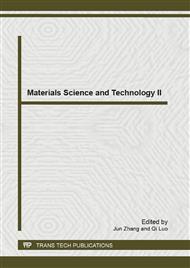[1]
X. H. An, A. A. Shawky and K. Maekawa, The Collapse Mechanism of a Subway Station during the Great Hanshin Earthquake, Cement and Concrete Composires, Vol.19,3(1997) , pp.241-257.
DOI: 10.1016/s0958-9465(97)00014-0
Google Scholar
[2]
W.L. Wang, T.T. Wang, J.J. Su, et al., Assessment of damage in mountain tunnels due to the Taiwan Chi-Chi Earthquake, Tunnel Underground Space Technology, Vol.16,3(2001) ,pp.133-150.
DOI: 10.1016/s0886-7798(01)00047-5
Google Scholar
[3]
Y.M.A. Hashash, J.J. Hook, B. Schmidt, et al., Seismic design and analysis of underground structures, Tunnelling and Underground Space Technology, Vol.16,4(2001) ,pp.247-293.
DOI: 10.1016/s0886-7798(01)00051-7
Google Scholar
[4]
J.M. Wang, Distribution of earthquake damage to underground facilities during the 1976 Tang-shan earthquake, Earthquake Spectra, Vol.1,4(1985) ,pp.741-757.
DOI: 10.1193/1.1585291
Google Scholar
[5]
B. Schmidt, Y. Hashash and T. Stimac, US immersed tube retrofit, Tunnels Tunneling Int, Vol.30,11(1998) ,pp.22-24.
Google Scholar
[6]
S. H. Nam, H.W. Song, K.J. Byun,et al., Seismic analysis of underground reinforced concrete structures considering elasto-plastic interface element with thickness, Engineering Structures, Vol.28,8(2006) ,pp.1122-1131.
DOI: 10.1016/j.engstruct.2005.12.003
Google Scholar
[7]
J. Chen, X. J. Shi and J. Li. Shaking table test of utility tunnel under non-uniform earthquake wave excitation, Soil dynamics and Earthquake Engineering, Vol.30,11(2010) ,p.1400–1416.
DOI: 10.1016/j.soildyn.2010.06.014
Google Scholar
[8]
G.W. Housner, L.A. Bergman, T.K. Caughey, et al., Structural Control: Past, Present, and Future, ASCE, Journal of Engineering Mechanics, Vol. 123,9(1997) ,pp.897-971.
Google Scholar
[9]
J. G. Liu, C. Schmidt-Hattenberger and G. Borm, Dynamic strain measurement with a fibre Bragg grating sensor system, Measurement, Vol.32,2(2002) ,pp.151-161.
DOI: 10.1016/s0263-2241(02)00007-6
Google Scholar
[10]
R. Maaskant, T. Alavie, R. M. Measures, et al., Fiber-optic Bragg Grating Sensors for Bridge Monitoring, Cement and Concrete Composites, Vol.19,1(1997) ,pp.21-33.
DOI: 10.1016/s0958-9465(96)00040-6
Google Scholar
[11]
L.B. Wan, Z.J. Wu, B.M. Zhang, et al., Determination of Internal Strain of Concrete Beam Using Fiber Bragg Grating Sensors, Journal of Optoelectronics•Laser, Vol.13,7(2002) ,pp.722-725.
Google Scholar


